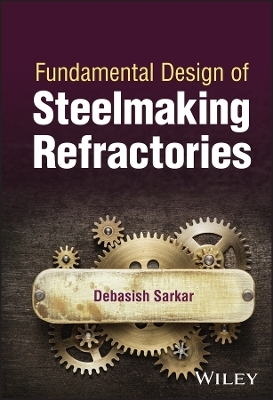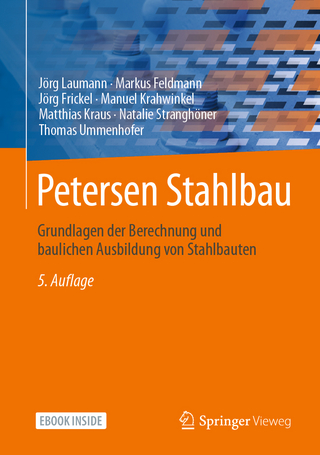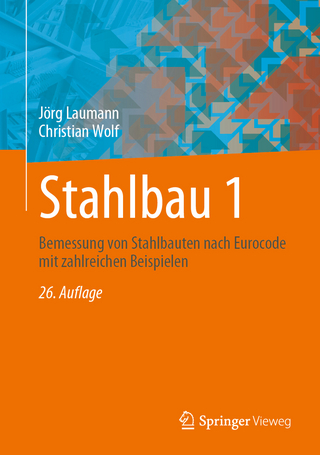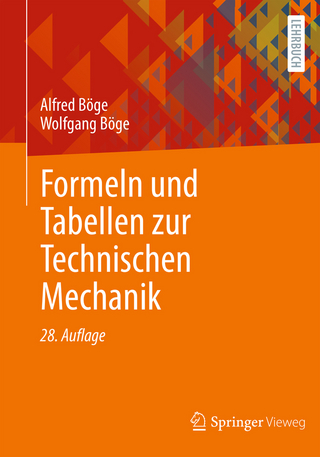
Fundamental Design of Steelmaking Refractories
John Wiley & Sons Inc (Verlag)
978-1-119-79073-0 (ISBN)
Fundamental Design of Steelmaking Refractories provides a fundamental understanding in the design of steelmaking refractories, in detail and all in one source, enabling readers to understand various issues including how heat and mass transfer occurs throughout the refractory, how matrix impurity or their contact affects the phases, and how invisible defects form during refractory manufacturing that eventually facilitates to analyze wear, corrosion, and performance of different refractory linings for primary and secondary steelmaking vessels, tundish, and continuous casting refractories.
Other specific sample topics covered in Fundamental Design of Steelmaking Refractories include:
Phase formations and correlation with impurity effects and refractory processing shortcomings
Stress, wear, and corrosion to design refractories and performance statistics of steelmaking refractories
Equilibrium and non-equilibrium phases, packing, stress and defects in compaction, and degree of ceramic bonding
Thermal and mechanical behavior, flow control mechanisms, continuous casting refractories, and premature refractory damage
Precast and purging system, consistent supply and time management, and preventive maintenance in operation
With its complete coverage of the subject, Fundamental Design of Steelmaking Refractories fulfills the academic demand of undergraduate, postgraduate, and research scholars of ceramic engineering; metallurgical engineers and mechanical engineering outlets that want to nurture in the refractory and steel sectors will also find value in the text.
Debasish Sarkar, PhD, is currently Professor of the Department of Ceramic Engineering, National Institute of Technology, Rourkela, India. Prof. Sarkar has been working in the subject area of nanostructured ceramics, ceramic processing, iron and steel making refractories. process optimization and finite element analysis of structural ceramics for 26 years. He has published numerous peer-review articles, national and international patents, prototype developments, and books on the projected topics.
Preface xv
Acknowledgment xvii
About Author xix
1 Heat and Mass Transfer 1
1.1 Introduction 1
1.2 Energy Conservation 2
1.3 Conduction 6
1.3.1 Basic Concept and Properties 6
1.3.2 One-Dimensional Steady-state Conduction 9
1.3.3 Two-Dimensional Steady-state Conduction 14
1.4 Convection 16
1.4.1 Boundary Layers 18
1.4.2 Laminar and Turbulent Flow 21
1.4.3 Free and Forced Convection 23
1.4.4 Flow in Confined Region 24
1.5 Radiation 29
1.5.1 Basic Concepts 29
1.5.2 Emission from Real Surfaces 29
1.5.3 Absorption, Reflection, and Transmission by Real Surfaces 31
1.5.4 Exchange Radiation 32
1.6 Mass Transfer 34
1.6.1 Convection Mass Transfer 35
1.6.2 Multiphase Mass Transfer 35
1.6.3 Analogy—Heat, Mass, and Momentum Transfer 37
1.7 Heat Transfer in Refractory Lining 39
1.7.1 Tunnel Kiln 39
1.7.2 Ladle Lining 40
References 43
2 Equilibrium and Nonequilibrium Phases 45
2.1 Introduction 45
2.2 Basics of Phase Diagram 45
2.2.1 Gibb’s Phase Rule 45
2.2.2 Binary Phase Diagram and Crystallization 47
2.2.3 Ternary Phase Diagram and Crystallization 55
2.2.4 Alkemade Lines 60
2.3 One-Component Phase Diagrams 62
2.3.1 Water 62
2.3.2 Quartz 63
2.4 Two-Component Phase Diagrams 64
2.4.1 Fe–C 64
2.4.2 Two Oxides Phase Diagrams 66
2.5 Three-Component Phase Diagrams 72
2.5.1 Three Oxides Phase Diagrams 72
2.5.2 FeO–SiO2 –C 78
2.6 Nucleation and Crystal Growth 79
2.6.1 Homogenous and Heterogeneous Nucleation 79
2.6.2 Crystal Growth Process 82
2.7 Nonequilibrium Phases 83
References 85
3 Packing, Stress, and Defects in Compaction 87
3.1 Introduction 87
3.2 Refractory Grading and Packing 88
3.2.1 Binary and Ternary System 89
3.2.2 Particle Morphology and Mechanical Response 91
3.2.3 Nanoscale Particles and Mechanical Response 93
3.2.4 Binder and Mixing on Packing 95
3.3 Stress–Strain during Compaction 98
3.4 Agglomeration and Compaction 99
3.5 Uniaxial Pressing 102
3.6 Cold Isostatic Pressing 104
3.7 Defects in Shaped Refractories 107
References 111
4 Degree of Ceramic Bonding 113
4.1 Introduction 113
4.2 Importance of Heating Compartment 114
4.2.1 Loading and Heating 114
4.2.2 Heat Distribution 116
4.2.3 Temperature Conformity 116
4.3 Initial Stage Sintering 118
4.3.1 Sintering Mechanisms of Two-particle Model 118
4.3.2 Atomic Diffusion 120
4.3.3 Sintering Kinetics 121
4.3.4 Sintering Variables 125
4.3.5 Limitations of Initial Stage of Sintering 126
4.4 Intermediate and Final Stage Sintering 126
4.4.1 Intermediate Stage Model 126
4.4.2 Final Stage Model 128
4.4.3 Influence of Entrapped Gases 129
4.5 Microstructure Alteration 130
4.5.1 Recrystallization and Grain Growth 130
4.5.2 Grain Growth: Normal and Abnormal 131
4.5.3 Pores and Secondary Crystallization 135
4.6 Sintering with Low Melting Constituents 137
4.7 Bonding Below 1000°C 138
4.7.1 Organic Binder 139
4.7.2 Inorganic Binder 140
4.7.3 Carbonaceous Binder 141
References 142
5 Thermal and Mechanical Behavior 143
5.1 Introduction 143
5.2 Mechanical Properties 144
5.2.1 Elastic Modulus 144
5.2.2 Hardness 146
5.2.3 Fracture Toughness 147
5.2.4 Strength 149
5.2.5 Fatigue 154
5.3 Cracking 154
5.3.1 Theory of Brittle Fracture 156
5.3.2 Physics of Fracture 158
5.3.3 Spontaneous Microcracking 159
5.4 Thermal Properties 160
5.4.1 Stress Anisotropy and Magnitude 160
5.4.2 Thermal Conductivity 162
5.4.3 Thermal Expansion 164
5.4.4 Thermal Shock 166
5.4.5 Thermal Stress Distribution 166
5.5 Thermomechanical Response 168
5.5.1 Refractoriness under Load 169
5.5.2 Creep in Compression (CIC) 171
5.5.3 Hot Modulus of Rupture 174
5.6 Wear 176
5.6.1 System-dependent Phenomena 176
5.6.2 Adhesive 178
5.6.3 Abrasive 179
5.6.4 Erosive 180
5.6.5 Oxidative 181
References 182
6 High Temperature Refractory Corrosion 183
6.1 Introduction 183
6.2 Thermodynamic Perceptions 184
6.3 Effect of Temperature and Water Vapor 187
6.4 Slag–Refractory Interactions 191
6.4.1 Diffusion in Solids 193
6.4.2 Oxidation 195
6.4.3 Infiltration 198
6.4.4 Dissolution 201
6.4.5 Crystallite Alteration 204
6.4.6 Endell, Fehling, and Kley Model 205
6.5 Phenomenological Approach and Slag Design 206
6.5.1 Refractory Solubility 209
6.5.2 Slag Composition and Volume Optimization 210
References 215
7 Operation and Refractories for Primary Steel 217
7.1 Introduction 217
7.2 Operational Features in BOF 221
7.2.1 Charging and Blowing 222
7.2.2 Mode of Blowing 223
7.2.3 Physicochemical Change in BOF 227
7.2.4 Tapping 230
7.2.5 Slag Formation 231
7.3 Operational Features in EAF 232
7.4 Refractory Designing and Lining 236
7.4.1 Steel Chemistry and Slag Composition 236
7.4.2 Thermal and Mechanical Stress 239
7.4.3 Refractory Lining and Corrosive Wear 243
7.4.4 Refractory Composition and Properties 249
7.5 Refractory Maintenance Practice 252
7.6 Philosophy to Consider Raw Materials 254
7.7 Microstructure-dependent Properties of Refractories 257
7.7.1 Microstructure Deterioration Inhibition to Improve Slag Corrosion Resistance 257
7.7.2 Slag Coating to Protect the Working Surface 258
7.7.3 Microstructure Reinforcement by Evaporation-Condensation of Pitch 259
7.7.4 Whisker Insertion to Reinforce Microstructure 259
7.7.5 Fracture Toughness Enhancement and Crack Propagation Inhibition 259
References 260
8 Operation and Refractories for Secondary Steelmaking 263
8.1 Introduction 263
8.2 Steel Diversity, Nomenclature, and Use 267
8.3 Vessels for Different Grades of Steel 270
8.4 Operational Features of Vessels 272
8.4.1 Ladle Furnace (LF) 273
8.4.2 Argon Oxygen Decarburization (AOD) 278
8.4.3 Vacuum Ladle Degassing Process 279
8.4.4 Stirring and Refining Process in Degassing 285
8.4.5 Composition Adjustment by Sealed Ar Bubbling with Oxygen Blowing (CAS–OB) 288
8.4.6 RH Snorkel 289
8.5 Designing Aspects of Refractories 291
8.6 Refractories for Working Lining 303
8.6.1 Magnesia–Carbon Refractories 303
8.6.2 Alumina–Magnesia–Carbon Refractories 306
8.6.3 Dolo–Carbon Refractories 310
8.6.4 Magnesia–chrome (MgO-Cr2O3) 313
8.6.5 Spinel Bricks 314
References 315
9 Precast and Purging System 319
9.1 Introduction 319
9.2 Composition Design of Castables 320
9.2.1 Choice of Raw Materials and Properties 322
9.2.2 Choice of Binders 329
9.2.3 Aggregates Grading 333
9.2.4 On-site Castable Casting 335
9.3 Precast-Shape Design and Manufacturing 337
9.4 Precast Shapes and Casting 337
9.5 Purging Plugs 341
9.5.1 Plug Design and Refractory 341
9.5.2 Gas Purging 344
9.5.3 Installation and Maintenance 346
9.5.4 Clogging and Corrosion 348
References 350
10 Refractories for Flow Control 353
10.1 Introduction 353
10.2 First–Second–Third Generation Slide Gate 355
10.3 New Generation Ladle Slide Gate System 359
10.4 Ladle Slide Gate Plate 360
10.4.1 Critical Design Parameters 362
10.4.2 Selection of Slide Plate and Fixing 366
10.4.3 Materials and Fabrication of SGP 369
10.4.4 Mode of Failures 374
10.4.5 FEA for Stress and Cracking 378
10.5 Tundish Slide Gate and Plate 380
10.5.1 Modern Slide Gate and Refractory Assembly 381
10.5.2 Materials and Fabrication 381
10.5.3 Cracking and Corrosion Phenomena 383
10.6 Short Nozzles for Ladle and Tundish 389
10.7 Nozzle Diameter and Gate Opening in Flow 390
References 393
11 Refractories for Continuous Casting 395
11.1 Introduction 395
11.2 Importance of Long Nozzles in Steel Transfer 397
11.2.1 Furnace to Ladle Transfer 397
11.2.2 Ladle to Tundish Transfer 398
11.2.3 Tundish to Mold Transfer 399
11.3 Tundish Lining 400
11.3.1 Lining and Failure 400
11.3.2 Lining Improvement and Maintenance 407
11.4 Ladle Shroud (LS) 409
11.4.1 Design and Geometry 409
11.4.2 Failures, Materials and Processing 418
11.4.3 Operational Practice 424
11.4.4 Flow Pattern 425
11.5 Mono Block Stopper 427
11.5.1 Preheating Schedule 427
11.5.2 Installation 428
11.5.3 Failures 429
11.5.4 Glazing 430
11.6 Submerged-Entry Nozzle 430
11.6.1 Installation and Failures 431
11.6.2 SEN Fixing for Thin Slab Caster 432
11.6.3 SES Installation and Failures 432
11.6.4 Corrosion and Clogging 435
References 444
12 Premature Refractory Life by Other Parameters 445
12.1 Introduction 445
12.2 Refractory Manufacturing Defects 446
12.2.1 Consistence Raw Material 447
12.2.2 Processing Parameters 449
12.2.3 Pressing and Firing 451
12.3 Packing and Transport 453
12.3.1 Packaging and Packing Material 453
12.3.2 Vibration-free Packaging 454
12.3.3 Loading, Transporting, and Unloading 455
12.4 Procurement and Lining Failures 456
12.4.1 Total Cost of Ownership Concept 457
12.4.2 Preliminary Features of Lining 458
12.4.3 Workmanship 462
12.5 Preventive Maintenance in Operation 463
12.5.1 Professional Service 464
12.5.2 Slag Composition, Temperature, and Viscosity 465
12.5.3 Monitor and Maintenance of Lining 472
12.6 Consistent Supply and Time Management 475
12.6.1 Cycle Concept 476
12.6.2 Pull/Push Concept 476
References 477
Index 479
| Erscheinungsdatum | 11.07.2023 |
|---|---|
| Verlagsort | New York |
| Sprache | englisch |
| Gewicht | 971 g |
| Themenwelt | Technik ► Bauwesen |
| Technik ► Maschinenbau | |
| ISBN-10 | 1-119-79073-5 / 1119790735 |
| ISBN-13 | 978-1-119-79073-0 / 9781119790730 |
| Zustand | Neuware |
| Informationen gemäß Produktsicherheitsverordnung (GPSR) | |
| Haben Sie eine Frage zum Produkt? |
aus dem Bereich


